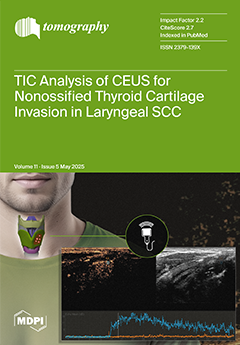Objectives: To evaluate the medical image segmentation performance of monochromatic images in various energy levels.
Methods: The low-density module (25 mm in diameter, 6 Hounsfield Unit (HU) in density difference from background) from the ACR464 phantom was scanned at both 10 mGy and 5 mGy dose levels. Virtual monoenergetic images (VMIs) at different energy levels of 40, 50, 60, 68, 74, and 100 keV were generated. The images at 10 mGy reconstructed with 50% adaptive statistical iterative reconstruction veo (ASIR-V50%) were used to train an image segmentation model based on U-Net. The evaluation set used 5 mGy VMIs reconstructed with various reconstruction algorithms: FBP, ASIR-V50%, ASIR-V100%, deep learning image reconstruction (DLIR) with low (DLIR-L), medium (DLIR-M), and high (DLIR-H) strength levels. U-Net was employed as a tool to compare algorithm performance. Image noise and segmentation metrics, such as the DICE coefficient, intersection over union (IOU), sensitivity, and Hausdorff distance, were calculated to assess both image quality and segmentation performance.
Results: DLIR-M and DLIR-H consistently achieved lower image noise and better segmentation performance, with the highest results observed at 60 keV, and DLIR-H had the lowest image noise across all energy levels. The performance metrics, including IOU, DICE, and sensitivity, were ranked in descending order with energy levels of 60 keV, 68 keV, 50 keV, 74 keV, 40 keV, and 100 keV. Specifically, at 60 keV, the average IOU values for each reconstruction method were 0.60 for FBP, 0.67 for ASIR-V50%, 0.68 for ASIR-V100%, 0.72 for DLIR-L, 0.75 for DLIR-M, and 0.75 for DLIR-H. The average DICE values were 0.75, 0.80, 0.82, 0.83, 0.85, and 0.86. The sensitivity values were 0.93, 0.91, 0.96, 0.95, 0.98, and 0.98.
Conclusions: For low-density, non-enhancing objects under a low dose, the 60 keV VMIs performed better in automatic segmentation. DLIR-M and DLIR-H algorithms delivered the best results, whereas DLIR-H provided the lowest image noise and highest sensitivity.
Full article






